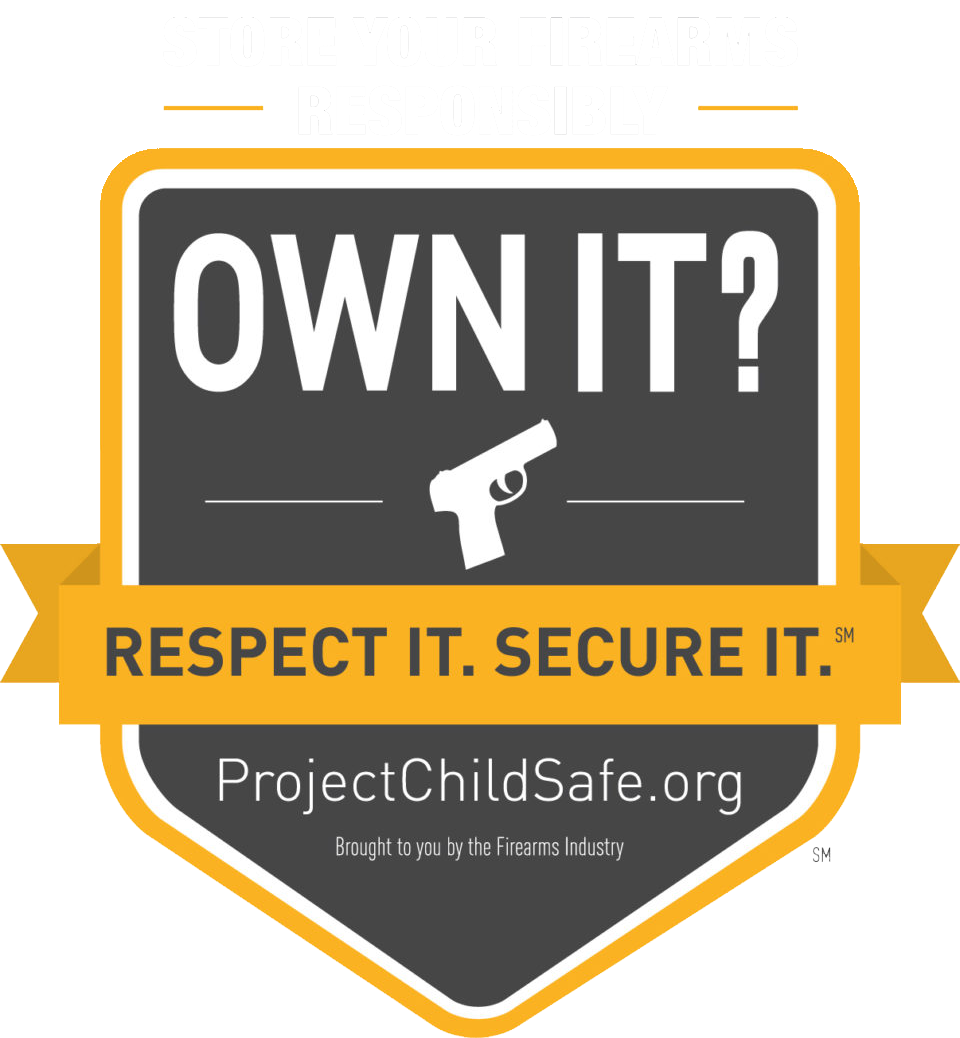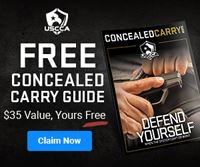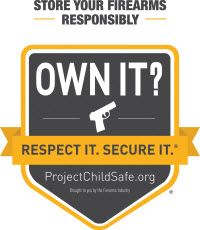Winchester Canyon Gun Club is dedicated to the public and it's members to learn, practice and challenge your marksmanship skills within all national, state and local firearm safety standards. Please see below for information regarding our commitment to firearm safety. Winchester Canyon Gun Club has onsite, during public hours (Saturdays, Sundays and Wednesdays), certified Range Safety Officers at each of its ranges for everyones safety. Before becoming a member, each member applicant is put thru an online safety briefing as well as an in-person safety briefing. All members applicants must prove to our Range Safety Officer during the in-person briefing their knowledge and competency with handling a firearm safely. Adult Shooters must be over the age of 21 or over the age of 18 with a valid & unexpired Hunting License. Signed waiver is good for one year. Click Here for St. of California Hunter Education information: https://wildlife.ca.gov/Hunter-Education CLICK HERE FOR FULL WCGC RANGE SAFETY RULES CLICK HERE FOR INFORMATION ABOUT FIREARM INSTRUCTION AT WCGC
|
Firearms safety begins with understanding and carefully following the rules of safe gun handling.
Before handling any firearm, familiarize yourself with these safety procedures:
- Know how the firearm operates — including safely opening and closing the action of the firearm, and removing ammunition from the gun or its magazine. For free safety and operating instructions, write to the manufacturer or visit its website.
- Always keep a gun pointed in a safe direction, even when handling an unloaded gun — so that if it were to fire it would not result in injury.
- Never assume that a firearm is unloaded. Immediately open the action and look into the chamber(s) for ammunition, or if the gun has a magazine, carefully remove it before opening the action.
- Always keep your finger off the trigger, even when handling an unloaded gun. Your finger should rest outside the trigger guard or along the side of the gun. The only time you should touch the trigger is when you are ready to safely fire.
Remember, nearly all firearms accidents in the home can be prevented simply by making sure that guns are kept unloaded and locked up, with ammunition secured in a separate location.
Winchester Canyon Incident Forms
WCGC Incident Accident Report Print Only 2024.pdf
WCGC Incident Eyewitness Report Print Only 2024.pdf
WCGC Eyewitness Incident Online Form
TEN TIPS FOR FIREARM SAFETY IN YOUR HOME
- Always keep the firearm’s muzzle pointed in a safe direction. A “safe direction” means that the gun is pointed so that even if an accidental discharge occurred, it would not result in injury.
- Always keep your finger off the trigger until you actually intend to shoot. When handling a gun, rest your finger outside the trigger guard or along the side of the gun. Don’t touch the trigger until you are actually ready to fire.
- Firearms should be unloaded when not actually in use. Whenever you pick up a gun, such as when removing it from or returning it to storage, remember to point it in a safe direction and make sure it is unloaded.
- Be sure you know how your firearm operates: read the manual on your firearm, know how to safely open and close the action of the firearm and know how to safely remove any ammunition from the firearm and its magazine.
- Store your firearms in a locked cabinet, safe, gun vault or storage case when not in use, ensuring they are in a location inaccessible by children and cannot be handled by anyone without your permission.
- Store your ammunition in a locked location separate from firearms.
- Use a gun locking device that renders the firearm inoperable when not in use. A gun lock should be used as an additional safety precaution and not as a substitute for secure storage.
- Make sure young people in your home are aware of and understand the safety guidelines concerning firearms. Have them sign the Project ChildSafe Pledge for young people—a reminder that if they find an unattended firearm in their home or a neighbor’s to not touch it, and tell an adult.
- Always unload, clean and place your firearms in their secure storage location immediately after returning from a hunting trip or a day at the range.
- Educate everyone in your family about firearms safety. Visit the Project ChildSafe website for safety information and to find out where to get a free firearm safety kit in your area.
1. Always point the muzzle in a safe direction. Control the direction of the muzzle at all times. Do not point a firearm or bow at anything you do not intend to shoot. Never rest a muzzle on your toe or foot. Keep your finger out of the trigger guard until the instant you are ready to fire. Always keep the safety on until ready to fire; however, the safety should never be a substitute for safe firearm handling.
2. Treat every firearm or bow with the same respect you would show a loaded gun or nocked arrow.Every time you pick up a firearm, the first thing you do is point the muzzle in a safe direction and check to see if it is loaded. Be sure the chamber and magazine are empty and that the action is open until ready to be fired. If you do not understand how to determine if it is loaded, do not accept the firearm until someone has safely shown you that it is unloaded. Read your instruction manual carefully before you handle new firearms or bows. Every time you pick up a firearm, the first thing you do is point the muzzle in a safe direction and check to see if it is loaded. Be sure the chamber and magazine are empty and that the action is open until ready to be fired. If you do not understand how to determine if it is loaded, do not accept the firearm until someone has safely shown you that it is unloaded. Read your instruction manual carefully before you handle new firearms or bows.
3. Be sure of your target and what is in front of and beyond your target. Before you pull the trigger you must properly identify your target. Determine that you have a safe backstop or background. Know how far bullets, arrows and pellets can travel. Never shoot at flat, hard surfaces, such as rocks because of ricochets.
4. Unload firearms and unstring conventional bows when not in use. Leave actions open, and store sporting arms in cases when traveling to and from shooting areas. Take bolts out or break down shotguns if necessary. Know how your equipment operates. Store and transport firearms and ammunition separately and under lock and key. Store firearms and bows in cool, dry places. Use gun or trigger locks and guards when not in use.
5. Handle the firearms, arrows and ammunition carefully. Avoid horseplay with firearms. Never climb a fence, a tree or a ladder with a loaded firearm or bow and arrows. Never jump a ditch or cross difficult terrain with a loaded firearm or nocked arrow. Never face or look down the barrel from the muzzle end. Be sure the only ammunition you carry correctly matches the gauge or caliber you are shooting. Always carry arrows in a protected cover or quiver. Learn the proper carries. Try to use the two-hand carry whenever possible because it affords you the best muzzle control. Always carry handguns with hammers over an empty chamber or cylinder. If you fall, be sure to disassemble the gun and check the barrel from the breech end for obstructions. Carry a field cleaning kit.
6. Know your safe zone-of-fire and stick to it. Your safe zone-of-fire is that area or direction in which you can safely fire a shot. It is "down range" at a shooting facility. In the field it is that mental image you draw in your mind with every step you take. Be sure you know where your companions are at all times. Never swing your gun or bow out of your safe zone-of-fire. Know the safe carries when there are persons to your sides, in front of, or behind you. If in doubt, never take a shot. When hunting, wear daylight fluorescent orange so you can be seen from a distance or in heavy cover.
7. Control your emotions when it comes to safety. If you lose control of your emotions you may do something carelessly. If you have just shot a target or animal you probably will be excited. At that moment you may turn with a loaded firearm back towards your friends or you might run with a loaded firearm towards a downed animal with the gun safety off. You or someone else may be in anger once you lose control of your emotions. Show discipline. Rehearse in your mind what the safe actions will be. Do not allow your daydreams to replace good judgment. Show restraint and pass up shots which have the slightest chance of being unsafe.
8. Wear hearing and eye protection. While shooting at the range, you must wear hearing and eye protection at all times. Firearms are loud and can create noises which are damaging to a person's hearing. It can be a gradual loss of hearing due to outbursts of noise over many years. The damage could also be immediate, especially if your ears are next to a muzzle blast. Vibrations from the blast are enough to create loss of hearing. Wear glasses to protect your eyes from escaping gases, burnt powder (especially in blackpowder shooting), and other debris.
9. Don't drink alcohol or take drugs before or while handling firearms or bow and arrows. Alcohol and drugs impair normal physical and mental body functions and mustn't be used before or while handling firearms or archery equipment. These substances affect emotions, making it easier to lose control. Alcohol and drugs impair normal physical and mental body functions and mustn't be used before or while handling firearms or archery equipment. These substances affect emotions, making it easier to lose control.
10. Be aware of additional circumstances which require added caution or safety awareness.Just because something isn't listed under these "ten commandments of shooting safety" doesn't mean you can ignore it if it is dangerous. There may be rules such as in muzzleloading or archery or posted at a shooting range which should also be followed. Also, practice reloading safety by following and reading all specific instructions. Practice all commandments of shooting safety. Ensure a safe future for you, others and the shooting sports! Just because something isn't listed under these "ten commandments of shooting safety" doesn't mean you can ignore it if it is dangerous. There may be rules such as in muzzleloading or archery or posted at a shooting range which should also be followed. Also, practice reloading safety by following and reading all specific instructions. Practice all commandments of shooting safety. Ensure a safe future for you, others and the shooting sports!

HUNTER EDUCATION Hunter Education Classes are available throughout the state. For details see https://wildlife.ca.gov/Hunter-Education HUNTING CHECKLIST FOR FAMILIES Hunting is a rich tradition, often passed down from family members to the next generation. The time may come when it’s your turn to introduce your children to this unique, exciting experience. Start by sharing stories about exploring the outdoors, outsmarting the game or even your first hunt; and please remember that safety should be part of every conversation about hunting and firearm use. The most important part of sharing this experience with your loved ones is ensuring they understand that proper precautions and responsible use of firearms can help make every hunting trip safe, fun and memorable. Don’t know where to start? Use the following checklist as your guide: ❏ My hunting companions and I share a commitment to responsible, lawful and ethical hunting. ❏ My family and friends know where I’m going and when I’ll return from a hunting trip.❏ I am adequately prepared and have previously:
❏ My group is wearing hunter orange clothing to ensure that neither I nor anyone in my group is mistaken for game. ❏ I am carrying appropriate safety equipment, including:
❏ I unload a gun when climbing, crossing a fence, jumping across a stream or getting into or out of a vehicle. ❏ When hunting from a tree stand, I:
❏ I follow safety precautions before shooting by:
❏ After the hunt, I store firearms securely and safely out of the reach of children or other unauthorized individuals. ❏ I store ammunition separately from the gun when it’s not being used. |

Firearm Safety Information curtesy of ProjectChildsafe.org.





 FIREARM SAFETY
FIREARM SAFETY